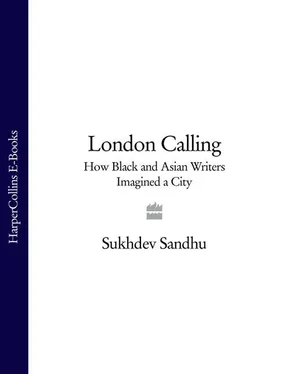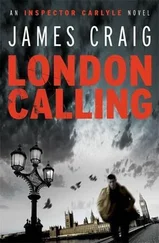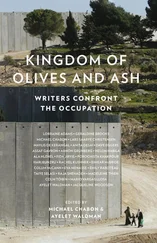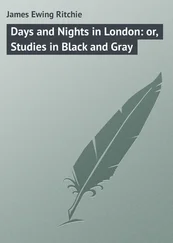Intermarriage between blacks and whites, and also between lascars from the Asian subcontinent and whites, was so rife that a correspondent for The Times in 1867 wrote, ‘There is hardly such a thing as a pure Englishman in this island. In place of the rather vulgarized and very inaccurate phrase, Anglo-Saxon, our national denomination, to be strictly correct, would be a composite of a dozen national titles.’ 6In 1900 – the heyday of an Empire often assumed to have been a foreign affair, thousands of sweltering miles away in the malarial jungles of darkest Africa and the heat-and-lust shimmer of the Raj – black and Asian people were common sights in London: peddling religious tracts in White-chapel; walking, law books in hand, to the Inns of Court where they were students; operating on sick patients at teaching hospitals; collecting fares on the city’s omnibuses; performing as nigger minstrels at children’s parties or church halls; campaigning for Parliament (in 1892 Dadabhai Naoroji became the first Asian to be elected to the House of Commons); advocating decolonization from behind lecterns at The Reform Club and Westminster Town Hall; serving cheap coffee in East End cafés to their fellow countrymen who had just finished long shifts at dock warehouses.
At Trafalgar Square, perhaps the best known landmark in all of London, a young couple from Singapore are wearing smiles and woolly hats and having their photo taken in front of the fountains; schoolchildren whoop with delight as they feed the pigeons; a lone activist protests human rights violations against the Kurds. No one stops to look at Nelson’s Column, far less the bronze relief at its south-facing base. Sculpted by J.E. Carew, it is called ‘The Death of Nelson’ and shows the Admiral stricken and dying. All around him is flurry: cannons are being loaded, the rigging tugged at, the injured carried away. At the very edge of the relief is a black mariner, rifle in hand, still busy doing battle. Who was he? HMS Victory ’s master book doesn’t supply his name, but it does reveal that he was one of a small number of foreigners amongst the crew, and that at least one other was born in Africa. ‘England Expects Every Man Will Do His Duty’ reads the inscription. Many black men during the eighteenth and nineteenth centuries did exactly that. They were often maimed or killed in the process. After abandoning life at sea, a number of them, as this book will show, ended up in London where they sank into destitution and were forced to choose between beggary and the workhouse.
Close to Nelson’s Column can be found a statue of Sir Henry Havelock who in 1857 put down an uprising in Lucknow with barbaric savagery. Having forced villagers to lick up the blood of the relatives his troops had just killed, he then made Muslims, on pain of being whipped, eat pork, and Hindus eat beef. They were further bludgeoned and then hanged. He was honoured for his efforts in 1861 when a memorial was erected in Trafalgar Square, paid for by public subscription. On its back can be found the exhortation, ‘Soldiers! Your Labours Your Durations Your Sufferings And Your Valour Will Not Be Forgotten By A Grateful Country’. Clearly they have. In October 2000 Mayor Ken Livingstone proposed that the statue be removed and admitted that he did not know who Havelock was. If the role of black and Asian people in shaping English history, both its high and its low points, can be so easily overlooked even at so visible and central a location as Trafalgar Square, is there any point in trying to draw attention to it in relation to less exalted parts of London?
Part of the problem may be that blacks and Asians tend to be used in contemporary discourse as metaphors for newness. Op-ed columnists and state-of-the-nation chroniclers invoke them to show how, along with deindustrialization, devolution and globalization, Englishness has changed since the end of the war. That they had already been serving in the armed forces, stirring up controversy in Parliament, or, as The Times suggested, through their mere bedroom arrangements helping to change the way that national identity is conceptualized, often goes unacknowledged. In contrast, New York defines itself through such symbols of newness and ethnic multiplicity as Ellis Island and the Statue of Liberty.
Popular culture encourages the conflation between London, ethnicity and newness. The very category ‘urban’, signifying a range of musical styles from garage and drum‘n’bass to glossy r‘n’b, is used as shorthand for black, or at least a certain version of it, one that is associated with a kind of in-yer-face, street-real nowness that is highly valued by advertisers and media planners who have always been eager to tap into – and exploit – youth culture’s desire for the next ‘next thing’.
Certainly, walking through the streets of London today, it’s hard not to be struck by the omnipresence of ‘colour’, and its importance in giving tang and immediacy to the city. Strange aromas flume out of North African side-caffs and foodstalls; puffaclad man-bwoys slouch along with barrio-hustler gaits and practise throwing shapes; Nike billboards enjoin us to buy boots endorsed by the latest soccer sensation who, according to that morning’s tabloids, is as lethal a striker in the bedroom as he is on the pitch; a riot of badly-xeroxed fly-posters plastered on to a defunct internet café big up Nation of Islam rallies and lecture series in Highgate to be delivered by ludicrously-monikered Indian holy men; a would-be It Girl sports a ludicrous bindi on her forehead as she flicks through the cheap sari fabrics on display outside ‘Qasim Cloathes’; a Bangladeshi cornershop offers cheap calls to Dakar and Accra; telephone kiosks are plastered with cards announcing the dominating charms of a 48DD Brand Nubian Beauty; a straggle of interestingly-coiffured clubbers queue to see if there are any returns for tonight’s soundclash between two Dalston-based dark-side glitch-fiends; a sleek young courier poised at the traffic lights sings to himself, ‘We’re loving it loving it loving it’; flush with his first salary cheque from a German multinational, an expensively-suited young Asian leads his broken-backed mother into an upscale salon for the first beauty treatment she has ever had.
None of this is heinous, but neither, except in terms of scale, is it especially new. Black people, whether as horn players, percussionist-beggars, touring gospel singers from the American South, or cash-in-hand jazz musicians at illegal basement clubs, have long introduced new and eerie sounds to the metropolis. During the eighteenth and nineteenth centuries they bonded with the white underclasses at wharf taverns where they glugged down ale and sang sea shanties, and at bawdy mixed-race hops where people of all colours roared and danced together. As retailers, too, they have hawked anything they had to hand – bits of cloth, hankies, toys, foodstuffs. Sometimes they hawked themselves. The Georgian version of telephone cards were the directories of ‘Covent Garden ladies’ which listed prostitutes available for hire. Mrs Lowes, of 68 Upper Charlotte Street in Soho, was a West Indian who charged clients three guineas for a whole night and one guinea for a short visit. She was described, in the tersely reductive terms that were also a feature of slave advertisements during the eighteenth century, as having ‘a sweet cheerful disposition, fine dark hair, and eyes of the same friendly hue; fine teeth’. 7
My central concern in this book is not just to highlight the presence of dark-skinned people in bygone London, but to tell the story of the black and Asian people who have told stories about black and Asian London from the eighteenth century to the present day. I want to show how they have depicted the city rather than how they have been depicted; Olaudah Equiano, V.S. Naipaul, Jean Rhys, Salman Rushdie, Frederick Douglass, Claude McKay, Wole Soyinka, Mary Seacole, Hanif Kureishi, Sam Selvon and Wilson Harris are just some of the authors who have written about the English metropolis. They have employed a wide variety of genres – short story, TV poem, journal, travelogue, radio drama, cinema screenplay. They have also had utterly conflicting responses to the capital. Some have sought to reverse European literary classics by depicting the metropolis as a heart of darkness or composing volumes entitled A Passage To London . They have drawn on – and crucially diverged from – the visions of London painted by Jonson, Blake, Dickens, H.G. Wells and T.S. Eliot.
Читать дальше












